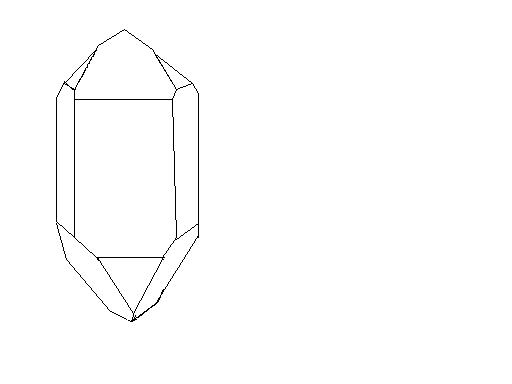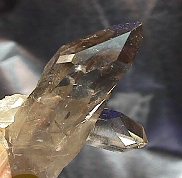Contents
Mineral Composition group and Chemical Formula
Sarah Sorden March 2002
Crystaline Structure
 | Quartz crystal structure |
(Hexagonal - Four axes, three are equal in length and lie at an angle of 120� from each other. The fourth is either longer or shorter but must be at a right angle toward the other corners.) The crystal structure of Quartz is complicated.

Quartz forms unusual crystals. They form as hexagonal prisms with their base pyramids modified by rhombohedral faces. This makes it Trigonal. The crystals are commonly large, single, and faultless. They are usually prismatic. These crystals may also be in disorganized groups. Crystals frequently twin; a famous twinning habit is the Japanese twin, where two crystals contact at a 90� angle. Quartz crystals can also contain certain "growths". One is a scepter growth, where the top of a crystal bulges out from the rest of the crystal, and another is a phantom growth, where one crystal forms over another, leaving a ghosted form inside.
Scepter Growth |
Single japanese twin. |
Twins can be found in clusters. |


